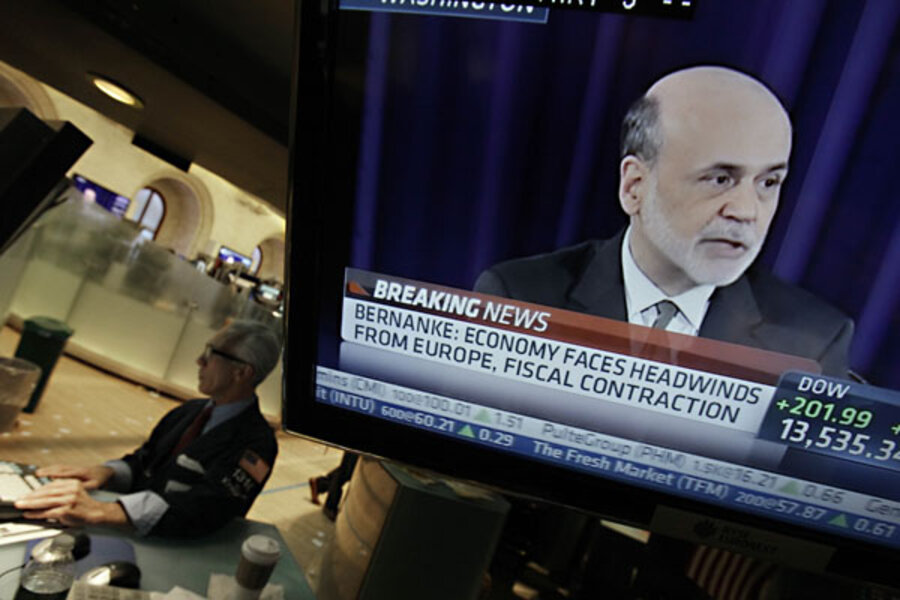Bernanke bump: Stocks rise early on Fed action
Loading...
| New York
U.S. stocks opened higher Friday, on track to record one of their best weeks since June, after the Federal Reserve stepped in again to help the weak economic recovery.
Just after the opening bell, the Dow Jones industrial average was up 65 points at 13,605. The Dow rocketed higher by 206 points on Thursday after the central bank announcement and closed at a four-year high.
The Fed pledged to spend $40 billion on mortgage bonds to drive down long-term interest rates and push investors into stocks. It also extended its guarantee of super-low, near-zero interest rates by six months, into 2015.
The Dow has climbed 2.2 percent this week, its best performance since early June. The last two weeks for the Standard & Poor's 500 index have also been the best since June.
European and Asian stocks spiked Friday in their first trading after the Fed move. French stocks were up 2 percent and German stocks 1 percent. The Nikkei average in Japan climbed almost 2 percent.
In the United States, the S&P was up seven points at 1,467, and the Nasdaq composite index was up 21 at 3,177.
UnitedHealth Group was among the biggest gainers after an announcement that it will be added to the 30-company Dow, replacing Kraft Foods. UnitedHealth rose $1.20, or 2.2 percent, to $55.10.
In the broader market, energy stocks were the best performers and telecommunications companies the worst.
The price of oil rose above $100 for the first time since May before dipping back below. It was up $1.35 for the day at $99.65. Unrest in the Middle East this week has heightened concerns about world oil supply.
Gold pushed higher for a second day, rising $3 an ounce to $1,775. Gold tends to rise after the Fed announcements like Thursday's, partly because investors fear inflation and partly because a weaker dollar makes gold more expensive.
The Commerce Department reported that retail sales increased in August by a seasonally adjusted 0.9 percent, mostly because of higher gasoline prices. Outside of gas and cars, sales rose only 0.1 percent, weaker than in July.
And the cost of fuel drove up consumer prices in August by the most in three years, according to the Labor Department. Without higher energy costs, inflation was static.
U.S. industrial production fell in August by the largest amount in more than three years, 1.2 percent, as factories produced fewer cars and other manufactured goods .







